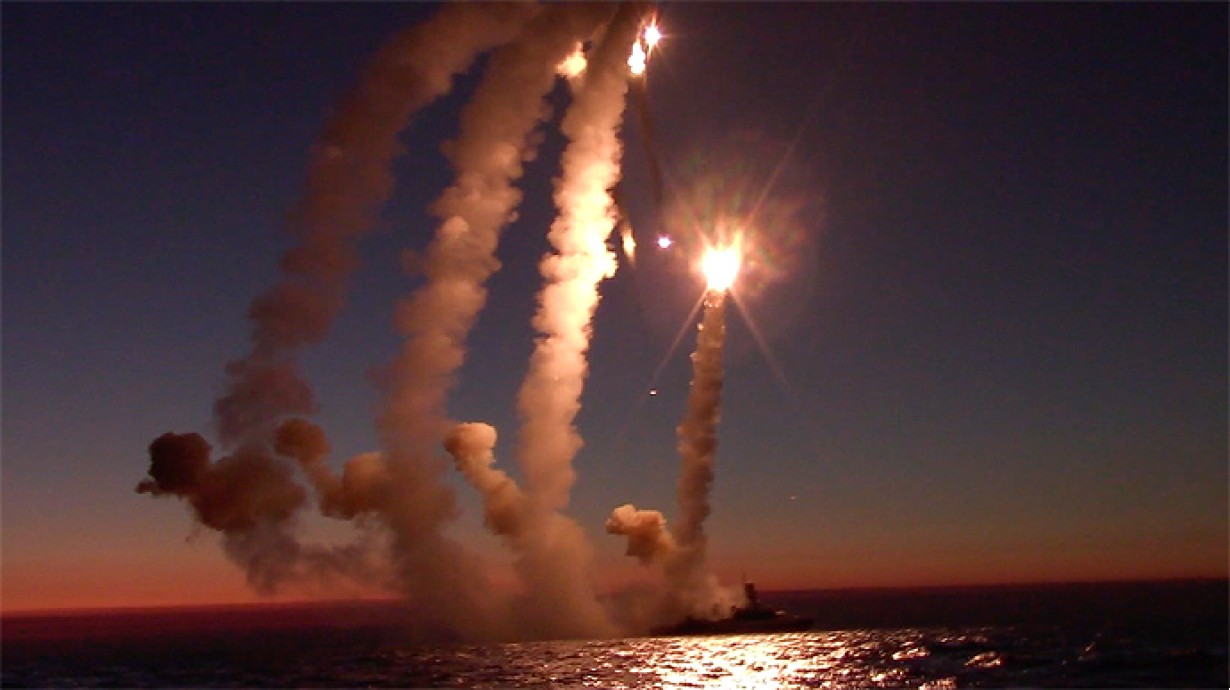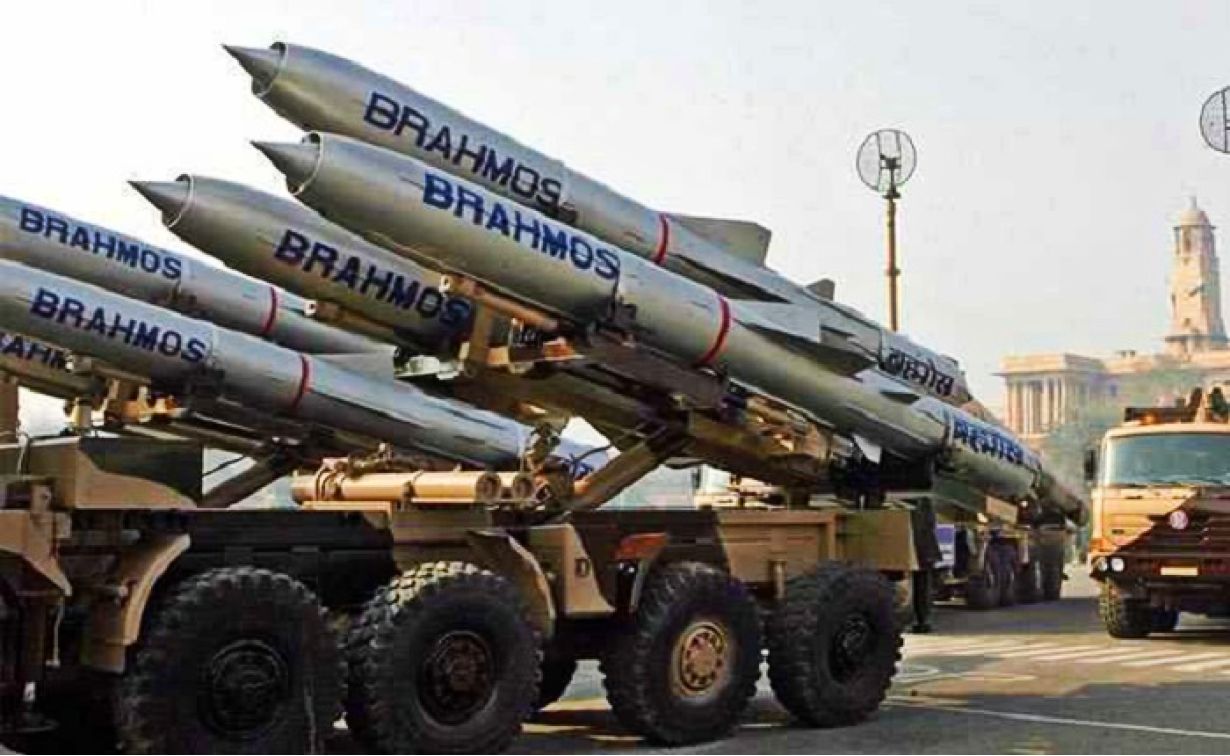Ukrainian officials claim their defense systems downed 15 Russian cruise missiles launched overnight, targeting Kyiv. This claim comes after Ukraine said it had intercepted Russia’s Hypersonic missiles, Kinzhal, using Patriot systems.
According to Serhiy Popko, a senior Ukrainian military official, no casualties were reported from the attack. He said he believed the missiles had been fired by four bombers flying from the Caspian Sea region.
Earlier, Russia launched its biggest swarm of drone attacks against Ukraine, hitting Kyiv and the Black Sea city of Odesa. Kyiv’s mayor said Russia had fired 60 Shahed kamikaze drones at Ukrainian targets, including 36 at Kyiv, all of which were shot down.
Why Deployment Of Cruise Missiles Is Prohibitively Expensive
German V-1 was the first operational cruise missile. Germans launched nearly 20,000 V-1s against targets in Britain. V-1 had a parabolic trajectory and was not a precision weapon in the strict sense.
However, the development of low-flying and sea-skimming cruise missiles commenced in the late 1970s.
Operational use had to wait for nearly a decade. Cruise missiles as a viable and potent weapon platform emerged during Operation Desert Storm, launched by 37 nations’ Multi-National Forces (MNF) led by the US on Iraq to destroy non-existent nuclear weapons and capability.
According to a report published by the Chief of Naval Operations office, US Navy fired 288 Tomahawk Land Attack Missiles (TLAM) during the war, which commenced on January 17, 1991.
Two-hundred-and-eighty-two TLAMs reached their assigned targets successfully. Six TLAMs malfunctioned midway after launch.
Since 1991 US Military has launched more than 1,600 TLAMs equipped with conventional warheads to engage various civilian and military targets in Iraq.
Most reports suggest that TLAMs, a single-use weapon platform, have been successful in striking the intended targets. Details of the extent of damage are not known. Most of the TLAMs carried a 1,000-pound (450 kilograms) warhead.
Cruise Missile Technology
The primary components of a cruise missile are:
- Propulsion System in the form of a Jet Engine
- Propellant
- Guidance System comprising Laser Ring Gyroscopes
- Terrain Following Radar
- Control Surfaces
- Warhead
- Laser Range Finder (optional)
Each of the above components is expensive and is destroyed when the missile impacts the intended target. That is why the cheapest cruise missile costs over US$1 million.
Most modern cruise missiles are equipped with Terrain Contour Matching Radar (TERCOM) and satellite-assisted navigation.
Estimated/Quoted Cost Of Various Cruise Missiles
As per the latest reports, the cost of one cruise missile of different origin is as under:
- Tomahawk Block IV – US$1.85 million
- Tomahawk Block V – US$2 million
- BrahMos Air Launched Cruise Missile (ALCM) – US$4.2 million or INR 30 crore. Cabinet Committee on Security has cleared the purchase of nearly 200 cruise missiles for the IAF at the proposed cost of INR 6,000 crore.
- BrahMos Ship Launched Cruise Missile (SLCM) – US$9 million or INR 75 crore. The CCS had cleared the purchase of 200 extended-range BrahMos supersonic cruise missiles at a proposed cost of INR 15,000 crore. SLCM will have a strike range of nearly 300 km and can be used against surface targets and ships. Warships of the Indian Navy will be equipped with SLCMs.
- Chinese ground-launched cruise missiles DH-10 and DF-100 are believed to cost more than US$5 million each. The exact cost is not available. Hypersonic cruise missile YJ-21 capable of flying around Mach 10, will likely cost US$8 million. All Chinese missiles claim to have a strike range of 1,000 to 1,500 kilometers.
- Russian cruise missiles Zircon, Kinzhal, Kalibr, and other variants are operational. The exact cost is not known.
- None of the manufacturers has given the CEP figure.
Weapon-Target Matching
Weapon-Target matching is a complex and time-consuming exercise. Two broad parameters govern weapon-target matching. The first parameter is the physical characteristics of the target, namely target dimensions and degree of hardness of the target.

The second parameter relates to target defenses. But one more important parameter has emerged due to the ever-increasing cost of weapons. In fact, weapon-target matching based on cost has gained primacy for deciding on using a weapon to establish a need to use a single-use weapon costing more than US$4 million.
The advent of cruise missiles gained prominence due to the exponential increase in target defenses. Many planners considered using expensive manned aircraft as an unviable and expensive option. Hence cruise missiles were considered to be a better and safer option for neutralizing the target.
However, over the years, the cost of cruise missiles has increased exponentially due to using the latest technology required to ensure that the missile finds its target. In fact, more than the quality of the avionics suite more important aspect is to obtain the exact coordinates of the target accurately to within a fraction of a second.
For instance, an error of ten seconds in the target coordinate, which is 600 kilometers from the missile launch base, would result in the missile missing the target by 30 meters. In the case of a point target, namely a radar station, command, control center, etc., only a direct hit will destroy the target.
The cost of each BrahMos ALCM is about US$4 million. If eight ALCMs are launched on a set of targets, the total cost is US$32 million. The current cost of a Su-30 MKI is about US$35 million, but it can be used hundreds of times. It is a mistaken belief that manned aircraft have become extremely vulnerable and cannot penetrate target defenses.
With improvement in defenses on the ground, huge improvements have also taken place wrt ECM/ECCM systems. These systems are capable of confusing and/or neutralizing SAMs, thus increasing the survivability chances of manned fighters.
Actual statistics from modern conflicts support the argument. For instance:
- During Operation Desert Storm, launched against Iraq in 1991, USAF and US Navy flew more than 29,000 sorties. The threat was from intense and concentrated ground defenses comprising over 15,000 SAMs, nearly 7,000 anti-aircraft guns, and more than 700 combat aircraft. However, the total losses were only 14 aircraft. In order to understand economics, one can assume each sortie is equivalent to the launch of one cruise missile costing US$2 million. Hence, 29,000 sorties by reusable fighters would imply a total cost of US$58,000 million and 29,000 cruise missiles. Compare it with the cost of 14 aircraft, each costing US$50 million or US$700 million. Hence, the cruise missile option is nearly 83 times more expensive than the manned aircraft option.
- Modern fighters use stand-off weapons, which allow fighters to launch the weapons while staying well outside the target defenses, thus reducing the risk of being hit by a SAM/ack-ack gun.

Weapon Effectiveness
For a successful cruise missile attack on a point target, the most important factor is the availability of the exact coordinates of the target. Wrong/wrongly-fed/inaccurate coordinates will result in the missile missing the intended target.
What is worse is if the missile/weapon strikes the wrong and unintended target, as happened to the Chinese Embassy being struck by a USAF-launched JDAMs.
On May 7, 1999, USAF carried out a mission to bomb the Yugoslav Federal Directorate for Supply and Procurement (FDSP). However, due to inaccurate coordinates fed into JDAMs, five JDAMs struck the nearby Chinese Embassy.
Cost Benefit Analysis: Indian Scenario
As explained earlier, single-use cruise missiles are an expensive option. For instance, let us consider using BrahMos ALCM/LACM, each costing US$4 million. The 15 ALCMs/LACMs launched against surface targets will account for US$60 million, which is nearly the cost of one reusable Rafale for hundreds of missions.

However, SLCMs costing about US$9 million launched against a ship would be an operationally and economically sane military option because even a small frigate costs a few hundred million dollars. Acquisition of SLCMs for the Indian Navy is, therefore, a sensible option.
Conclusion
Cruise missiles are one of the most formidable weapon systems in the inventory of most nations. However, due to its prohibitive cost and single use, large-scale usage of this platform against low-value surface targets may not be economical.
The 37-nation Multi Nation Forces exhausted their entire resource of Tomahawk cruise missiles against Iraq in about 42 days. Employment of cruise missiles would be operationally most beneficial against heavily defended high-value targets.
However, using ALCM/SLCM against enemy shipping, a high-value target, is one of the best options, both economically and operationally. A direct hit by one/two cruise missiles might result in the sinking of a ship costing a few hundred million dollars.
- Gp Cpt TP Srivastava (Retd) is an ex-NDA who flew MiG-21 and 29. He is a qualified flying instructor. He commanded the MiG-21 squadron. He is a directing staff at DSSC Wellington and chief instructor at the College of Air Warfare. VIEWS PERSONAL OF THE AUTHOR
- Follow EurAsian Times on Google News




